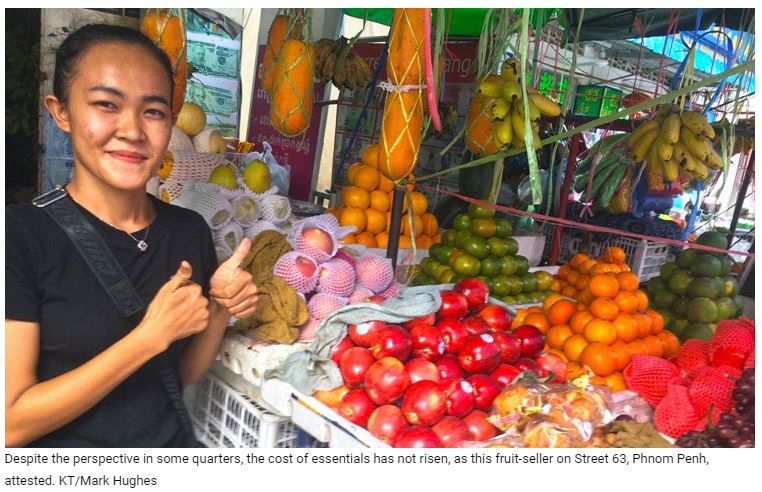Cambodia: Cost of living data goes against local sentiment
Complaints by local workers that they are experiencing a rise in their cost of living have not been confirmed by official data, with surveys stating food, transport and medical costs are stable and the Consumer Price Index projected to increase at a relatively low rate of around 2 percent a year until 2022.
The Consumer Price Index (CPI) is a measure that examines the weighted average of prices of a basket of consumer goods and services, such as transportation, food and medical care. Changes in the CPI are used to assess price changes associated with the cost of living.
Cost of living complaints had been raised directly to Khmer Times recently when discussing the $2 increase to the minimum wage for garment factory workers that was set this month, with workers stating wages are “being eaten up by increasing food prices, medical expenses and rent”.
However, the World Food Programme’s most recent food price report concluded that from November 2019 to August 2020 in Cambodia prices remained fairly stable for most key food commodities.
“While there was a spike in retail food prices for some fresh commodities in late March and early April 2020, since May much of this fluctuation has reduced and prices have stabilised, keeping prices within expected seasonal changes for key commodities in Cambodia,” the report said.
COVID-19 and its consequent loss of jobs or cuts in pay have lessened demand, which has kept prices down.
Asian Development Bank (ADB) Cambodia Country Economist David Freedman also argued stable food prices, as well as an oversupply in global oil will keep the CPI increase to a relatively low level of 2.1 percent in 2020 before falling further to 1.8 percent in 2021.
“The annual average inflation forecast for 2020 and 2021 factors in historical Consumer Price Index data from the National Institute of Statistics of the Ministry of Planning made available to us up to the end of June 2020, information on food price trends that is collected by the WFP each month and updated projections for international commodity prices,” he said.
“The forecast aligns with the ADB baseline prices and inflation assumption on the international economy for 2020 and 2021, including expected low oil prices,” he added
Economic analysts have said that inflation levels should be between 0 to 5 percent and ideally at between 2 to 3 percent, so the cost of living remains under control while people can also earn more to afford their daily expenses and producers can earn higher profits.
Source: https://www.khmertimeskh.com/50767708/cost-of-living-data-goes-against-local-sentiment/


 English
English




